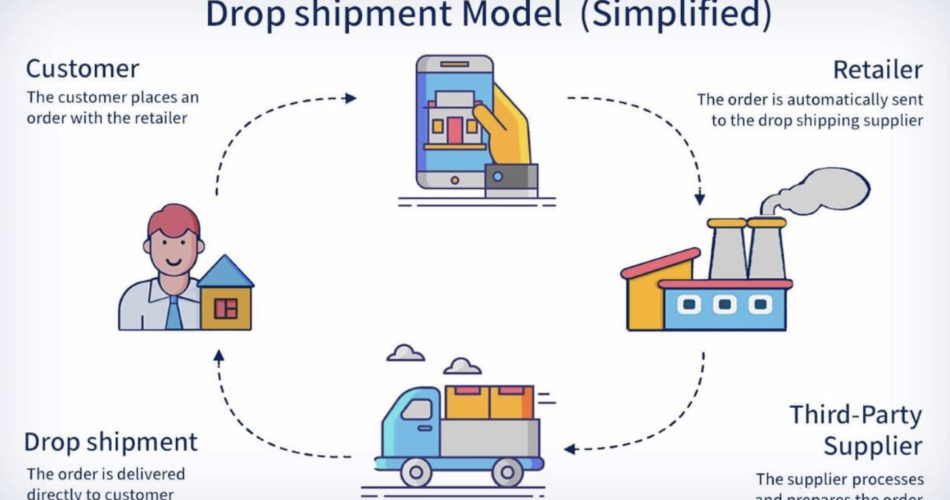Contents
- 1 Introduction to drop shipping and its benefits
- 2 How drop shipping works: Understanding the supply chain
- 3 Finding the right suppliers for your drop shipping business
- 4 Choosing the right products to sell through drop shipping
- 5 Setting up your online store for drop shipping success
- 6 Optimizing your drop shipping website for conversions
- 7 Managing inventory and order fulfillment in drop shipping
- 8 Streamlining your supply chain for maximum efficiency
- 9 Marketing and promoting your drop shipping business
- 10 Common challenges and how to overcome them in drop shipping
- 11 Tools and resources for successful drop shipping
- 12 Conclusion: Building a profitable drop shipping business
Introduction to drop shipping and its benefits
As an experienced e-commerce entrepreneur, I’ve seen firsthand the incredible potential of drop shipping to build a successful and profitable online business. Drop shipping is a fulfillment model where the retailer doesn’t keep the products in stock but instead transfers customer orders and shipment details to a third-party supplier, who then ships the goods directly to the customer. This model offers numerous advantages, including:
- Low Startup Costs: With drop shipping, you can start an online business with minimal upfront investment, as you don’t need to purchase and store inventory.
- Flexibility and Scalability: Drop shipping allows you to easily expand your product offerings and scale your business without the hassle of managing physical inventory.
- Reduced Risk: By outsourcing the fulfillment process, you minimize the risk of overstocking or being left with unsold inventory.
- Improved Cash Flow: In a traditional retail model, you would need to invest in inventory upfront, but with drop shipping, you only pay for the products once a customer places an order.
In this comprehensive guide, I’ll walk you through the key steps to building a successful and profitable drop shipping business, from finding the right suppliers to optimizing your supply chain for maximum efficiency.
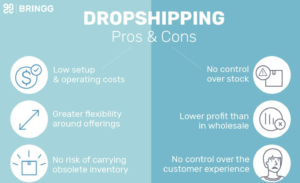
drop shipping and its benefits
How drop shipping works: Understanding the supply chain
At its core, drop shipping involves a three-way relationship between the customer, the retailer, and the supplier. Here’s how the process typically works:
- The Customer Places an Order: A customer visits your online store and places an order for a product.
- The Retailer Forwards the Order: You, as the retailer, receive the customer’s order and payment information and then forward the order details to your supplier.
- The Supplier Fulfills the Order: The supplier then packages and ships the product directly to the customer, typically using their own branded packaging and shipping labels.
- The Customer Receives the Order: The customer receives the product, unaware of the drop shipping arrangement, as the shipment appears to come directly from your business.
This streamlined supply chain allows you to offer a wide range of products without the hassle of managing inventory, shipping, and logistics. By partnering with reliable suppliers, you can focus on building your brand, marketing your products, and providing excellent customer service.
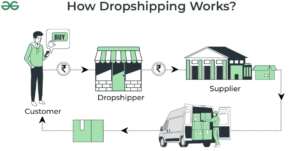
How drop shipping works
Finding the right suppliers for your drop shipping business
Selecting the right suppliers is crucial to the success of your drop shipping business. Here are some key considerations when choosing your suppliers:
- Product Quality: Ensure that your suppliers offer high-quality products that meet your standards and customer expectations.
- Reliable Fulfillment: Look for suppliers with a track record of fast, accurate, and reliable order fulfillment.
- Competitive Pricing: Compare pricing and negotiate with suppliers to ensure you can offer competitive prices to your customers.
- Responsive Customer Service: Prioritize suppliers who provide responsive and helpful customer support to address any issues that may arise.
- Inventory Availability: Choose suppliers with a wide range of products in stock and the ability to quickly replenish popular items.
To find the right suppliers, you can utilize online directories, industry forums, and your own network of contacts. Reach out to potential suppliers, request samples, and thoroughly vet their capabilities before committing to a partnership.

Finding the right suppliers for your drop shipping business
Choosing the right products to sell through drop shipping
Selecting the right products to sell is crucial for the success of your drop shipping business. Here are some factors to consider when choosing your product offerings:
- Market Demand: Research popular and trending products in your target market to identify items with high customer demand.
- Profit Margins: Look for products with healthy profit margins that will allow you to price competitively while still maintaining a healthy bottom line.
- Supplier Reliability: Ensure that your suppliers can consistently fulfill orders for the products you plan to sell.
- Shipping Costs: Consider the weight, size, and shipping costs associated with each product to ensure you can offer reasonable shipping rates to your customers.
- Uniqueness: Differentiate your offerings by identifying unique or niche products that your competitors may not be selling.
By carefully curating your product selection, you can create a compelling and profitable drop shipping business that stands out in the crowded e-commerce landscape.
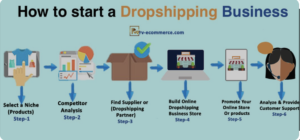
Setting up your online store for drop shipping success
Setting up your online store for drop shipping success
Establishing a professional and user-friendly online store is essential for the success of your drop shipping business. Here are some key considerations when setting up your e-commerce platform:
- Choose the Right E-commerce Platform: Select a platform that seamlessly integrates with your drop shipping suppliers, offers robust inventory management tools, and provides a smooth checkout experience for your customers.
- Optimize Your Product Listings: Craft detailed and compelling product descriptions, high-quality images, and accurate product information to attract and convert potential customers.
- Implement Efficient Order Management: Ensure that your e-commerce platform can automatically forward customer orders to your suppliers, streamlining the fulfillment process.
- Provide Excellent Customer Service: Offer clear policies, easy returns, and responsive customer support to build trust and loyalty with your customers.
- Integrate with Shipping Carriers: Connect your store with reputable shipping carriers to provide accurate shipping estimates and tracking information to your customers.
By creating a well-designed and user-friendly online store, you can enhance the customer experience, increase conversions, and position your drop shipping business for long-term success.
Optimizing your drop shipping website for conversions
To maximize the profitability of your drop shipping business, it’s essential to optimize your website for high conversion rates. Here are some strategies to consider:
- Improve Site Navigation: Ensure your website’s navigation is intuitive and easy to use, guiding customers quickly to the products they’re searching for.
- Enhance Product Presentations: Use high-quality images, detailed descriptions, and informative videos to showcase your products in the best possible light.
- Implement Compelling Calls-to-Action: Strategically place eye-catching calls-to-action throughout your website to encourage customers to make a purchase.
- Optimize for Mobile Devices: Ensure your website is mobile-friendly, as a significant portion of online shopping now takes place on smartphones and tablets.
- Leverage Social Proof: Incorporate customer reviews, testimonials, and social media integrations to build trust and credibility with your visitors.
- A/B Test and Iterate: Constantly experiment with different design elements, content, and marketing strategies to identify the most effective tactics for your business.
By continuously optimizing your drop shipping website, you can drive more traffic, increase conversion rates, and ultimately boost your profitability.
Managing inventory and order fulfillment in drop shipping
One of the key advantages of drop shipping is the ability to manage your inventory and order fulfillment without the hassle of physical storage and logistics. However, it’s still essential to have a well-structured process in place to ensure efficient operations. Here’s how to approach inventory and order management:
- Establish Clear Communication with Suppliers: Maintain regular communication with your suppliers to stay informed about product availability, lead times, and any potential stock issues.
- Implement Inventory Tracking: Use your e-commerce platform’s inventory management tools to track stock levels, monitor sales trends, and proactively order popular items.
- Streamline the Order Fulfillment Process: Automate the process of forwarding customer orders to your suppliers, ensuring timely and accurate order processing.
- Monitor Order Status and Shipments: Closely monitor the status of your customer orders and shipments, providing accurate tracking information and addressing any delivery issues that may arise.
- Maintain Accurate Inventory Data: Regularly reconcile your online inventory with your suppliers’ stock levels to ensure a seamless customer experience and avoid overselling.
By effectively managing your inventory and order fulfillment processes, you can minimize delays, reduce customer complaints, and maintain a high level of service, all of which are crucial for the long-term success of your drop shipping business.
Streamlining your supply chain for maximum efficiency
To maximize the profitability of your drop shipping business shipping business, it’s essential to streamline your supply chain for maximum efficiency. Here are some strategies to consider:
- Diversify Your Supplier Network: Maintain relationships with multiple suppliers to mitigate the risk of stock shortages or fulfillment delays from a single source.
- Automate Supply Chain Processes: Leverage technology and integration tools to automate the transfer of order information, inventory updates, and shipment tracking between your e-commerce platform and your suppliers.
- Optimize Shipping and Logistics: Negotiate competitive shipping rates with carriers, offer a variety of shipping options to customers, and continuously monitor and optimize your shipping processes.
- Enhance Supplier Relationships: Foster strong partnerships with your suppliers by providing accurate sales forecasts, communicating effectively, and offering constructive feedback to improve their performance.
- Implement Inventory Management Strategies: Use data-driven forecasting, safety stock levels, and other inventory management techniques to ensure you have the right products in stock to meet customer demand.
By streamlining your supply chain, you can reduce costs, improve delivery times, and provide a superior customer experience, all of which contribute to the long-term success and profitability of your drop shipping business.
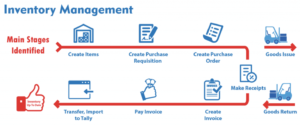
Managing inventory and order fulfillment in drop shipping
Marketing and promoting your drop shipping business
Effective marketing and promotion are essential for driving traffic, generating sales, and building a successful drop shipping business. Here are some strategies to consider:
- Develop a Strong Brand Identity: Create a memorable brand name, logo, and visual identity to help your business stand out in the crowded e-commerce landscape.
- Leverage Search Engine Optimization (SEO): Optimize your website and product listings for relevant keywords to improve your visibility in search engine results.
- Utilize Social Media Marketing: Engage with your target audience on platforms like Instagram, Facebook, and TikTok, showcasing your products and building a loyal following.
- Implement Targeted Advertising: Leverage paid advertising channels, such as Google Ads and Facebook Ads, to reach potential customers with highly targeted and personalized campaigns.
- Offer Compelling Promotions: Run limited-time sales, discounts, or bundle offers to drive customer interest and increase conversion rates.
- Encourage Customer Referrals: Incentivize your existing customers to refer their friends and family, tapping into the power of word-of-mouth marketing.
By employing a comprehensive and multi-channel marketing strategy, you can effectively promote your drop shipping business, attract a steady stream of customers, and drive sustainable growth.
Common challenges and how to overcome them in drop shipping
While drop shipping offers numerous advantages, it’s not without its challenges. Here are some common issues you may face and strategies to overcome them:
- Supplier Reliability: Ensure that your suppliers consistently fulfill orders accurately and on time. Regularly monitor their performance and be prepared to find alternative suppliers if necessary.
- Product Quality Control: Carefully vet your suppliers and their products to maintain high quality standards and avoid customer dissatisfaction.
- Inventory Fluctuations: Closely monitor your suppliers’ stock levels and adjust your marketing and sales strategies accordingly to avoid overselling or disappointing customers.
- Shipping and Logistics: Continuously optimize your shipping processes, negotiate with carriers, and provide customers with accurate delivery estimates to manage their expectations.
- Competition and Pricing: Research your competitors, identify unique selling points, and price your products competitively to stand out in the market.
- Customer Service: Provide responsive and helpful customer support to address any issues or concerns that may arise, building trust and loyalty with your customers.
By anticipating and proactively addressing these challenges, you can navigate the complexities of drop shipping and ensure the long-term success of your business.
Tools and resources for successful drop shipping
To streamline your drop shipping operations and stay ahead of the competition, consider leveraging the following tools and resources:
- E-commerce Platforms: Utilize platforms like Shopify, WooCommerce, or BigCommerce, which offer robust drop shipping integration and inventory management capabilities.
- Supplier Directories: Explore directories like Oberlo, SaleHoo, or AliExpress to discover reliable and vetted drop shipping suppliers.
- Inventory Management Software: Invest in tools like Skubana, Linnworks, or Ordoro to automate your inventory tracking, order fulfillment, and supplier communication.
- Marketing Automation: Utilize platforms like Mailchimp, Klaviyo, or Drip to streamline your email marketing, social media, and advertising campaigns.
- Analytics and Reporting: Leverage tools like Google Analytics, Shopify Analytics, or Profit Dashboard to gain insights into your business performance and make data-driven decisions.
- Industry Blogs and Communities: Stay up-to-date with the latest trends, best practices, and expert advice by following leading e-commerce blogs and participating in online forums.
By leveraging these tools and resources, you can enhance your operational efficiency, make more informed decisions, and position your drop shipping business for long-term success.
Conclusion: Building a profitable drop shipping business
In conclusion, drop shipping offers an incredible opportunity to build a successful and profitable online business with minimal upfront investment. By understanding the supply chain, finding the right suppliers, and optimizing your operations, you can create a thriving drop shipping venture.
Remember, the key to success lies in continuously improving your processes, staying agile in the face of market changes, and providing an exceptional customer experience. With the right strategies and the right tools, you can maximize your profits and build a drop shipping business that stands the test of time.
